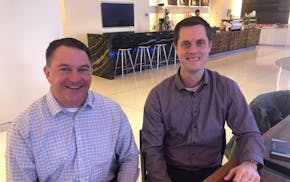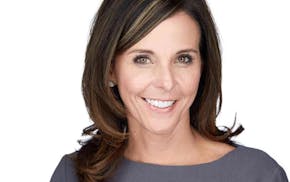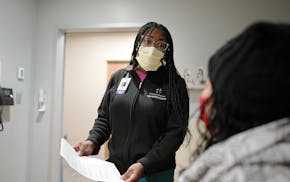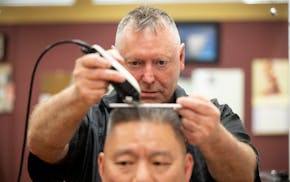More than 20 years ago, Bob Hartzell, who grew up in a family manufacturing business, received the cash "offer I couldn't refuse" for the division of the former Hartzell Corp. that he came to own through his late father.
"I cashed out," recalled Hartzell, 64. "I was only in my 40s."
Hartzell subsequently invested in 1996 in Chuck & Don's pet supplies and eventually became the CEO and majority owner.
Several years ago, a big competitor came courting.
But he and co-owner Chuck Anderson were enjoying a fast-growing, profitable company that today employs 400 and operates 40 stores in Minnesota and Colorado. They also wanted a potentially better future for employees.
And Hartzell wasn't fond of the abrupt end of his career with his former company.
Hartzell became a student, with several other small-business owners he knew, of employee-stock ownership plans (ESOPs).
"I figured the employees would be the ideal buyer," Hartzell said. "As I got familiar with ESOPs, it sounded like a great opportunity to help employees get control of the company and build a wealth-building retirement vehicle, if we continued to do as well.
"And ownership is a great motivator."
Hartzell and Anderson, 76, are in the fourth year of selling their stock to an ESOP that is funded out of employee portion of pretax profits.
It's a conservative plan, designed by Minneapolis-based Chartwell Financial, which specializes in ESOPs, that is not expected to require any debt until employees cross the 50 percent-ownership threshold, probably in 2020.
Meanwhile, the value of the firm, as measured annually by an independent party, has increased from more than $10 million to approaching $20 million.
"We're doing this in a constructive, conservative fashion," Hartzell said. "I didn't want to go to a highly leveraged situation. I want the company to be sustainable [for the employee-owners].
"We feel this is working. At the end of this year, the employees will be 60 percent owners of their [individual] stock holdings. There's a five-year vesting period. Our employees who have been with this … get a contribution of stock and their stock from previous years also has grown [in value]."
Once the employees control more than 50 percent of the total stock, an independent ESOP trustee determines the composition of the board.
Chief Financial Officer Tom Murphy said employees who work at least 1,000 hours a year, or about half-time, get an annual ESOP allotment proportionate to their wages. No taxes — it's a retirement plan.
The owners likely will get paid 20 percent or so less over time for their stock than they would if they sold to a big pet industry consolidator or private equity outfit, particularly at the record high valuations being paid in today's hot M&A market. However, Hartzell said he and Anderson are getting tremendous satisfaction over the gradual transfer of ownership to employees as well as a good price.
The company's sales are growing at a 15 percent-plus pace and it's generating healthy annual increases in positive cash flow, Murphy said.
Chuck & Don's employees also are part of a movement of 15 million-plus employees at more than 9,600 U.S. companies that are at least partly owned by their workers, according to the National Center for Employee Ownership (NCEO).
Advocates said this is one of the only ways, on top of retirement plans such as 401(k)s, in which workers can build long-term wealth by being stockholders. Vested employees typically sell their shares back to the ESOP trust when they depart or retire.
And ESOP companies tend to outperform their peer groups.
The Chuck & Don's ESOP is being funded by profit-sharing that used to go to employees in the form of matching 401(k) contributions. However, many employees didn't take advantage of that optional retirement plan and didn't get the benefit.
The secret sauce for successful ESOPs is owners willing to take the get-rich-slower method, the acquisition plan must be conservative and not involve too much debt, and the company must be growing and sufficiently profitable.
Neal St. Anthony has been a Star Tribune business columnist and reporter since 1984. He can be contacted at nstanthony@startribune.com.

St. Anthony: 'Patient' investing paying off for St. Paul's Hill Capital

Jennifer Smith, leader of Burnsville's Innovative Office Solutions, has died

St. Anthony: Medical professions in Minnesota need more people of color in their ranks


